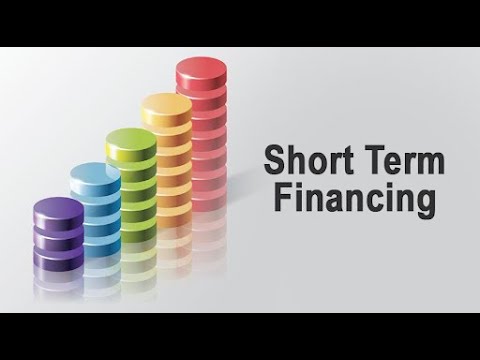What Are Short Term Markets? A Beginner’s Guide to Liquidity and Returns
Short term markets are all about securities that have short maturities. In general, these maturities are usually under a year. Some of the most popular short term market instruments include Treasury Bills, Certificates of Deposits, and Commercial Paper. You can also consider money market instruments under short term markets.
Investors who are looking forward to parking their money for short time periods for maximum gain can consider these markets.
They may not offer the best returns, but you will enjoy a high level of liquidity.
Read on and let’s explore more on short term markets.
What Are Short Term Markets?
Short term debt markets issue fixed-income securities with original maturities less than one year. Major issuers include governments, banks, and corporations needing capital for the short term.
On the investor side, participants range from individuals to money market mutual funds to large institutions parking cash.
Key Features:
- High liquidity – can easily buy/sell securities
- Low volatility – stable principal value
- Low yields compared to long term bonds
Short term markets offer investors a liquified, relatively safe place to invest cash while earning modest yields. In exchange for lending capital short term, investors gain liquidity and principal stability.
Investing in Short Term Markets
If short term markets align with your financial objectives, how can you invest? Here are some options:
Treasury Bills (T-Bills) – These debt securities issued by the U.S. government come in 4-, 13-, 26-, and 52-week maturities. T-bills are extremely liquid and considered the safest short-term investment around. You can buy T-bills directly via TreasuryDirect or employ a broker. Yields are modest but stable.
Money Market Funds – These mutual funds invest in short term debt instruments like T-bills and commercial paper. Money market funds offer diversity across many issuers while providing check-writing and ATM card privileges. Some money funds yield more than T-bills but may carry slightly higher risk.
Certificates of Deposit (CDs) – CDs are savings accounts holding money for a set period of time, from 3 months to 5 years, at banks and credit unions. Early withdrawal incurs penalties. CD yields fluctuate more than T-bills but often higher. Many investors ladder CDs to boost liquidity.
Savings Accounts – Even basic bank savings accounts invested solely in short term markets. While yields are very low, savings provide FDIC insurance up to $250,000 per person along with seamless liquidity.
As you can see, individual objectives determine the right short-term vehicle. Seek higher yields or tax advantages potentially with more risk or emphasize safety plus liquidity and accept lower returns. Laddering across options diversifies timing and interest rate risk.
Advantages of Short-Term Markets
Investing in short term fixed-income has several potential benefits:
- Preservation of principal – With short maturities, there is little interest rate risk. Barring default, investors can expect to get principal back.
- Liquidity – Short term debt is highly liquid as maturities are often just days or months. Investors can access cash quickly.
- Diversity – Money can be spread across CDs, T-bills, commercial paper, and other instruments. This reduces default risk via diversification.
- Stable returns – While yields fluctuate, short term markets offer consistent modest returns superior to cash.
In essence, short term markets offer modest yield and diversification while focusing on liquidity and capital preservation. This matches the priorities of many conservative investors.
Disadvantages of Short-Term Markets
There are also drawbacks to short term fixed-income investing:
- Inflation risk erodes real returns – Yields often fail to match inflation, reducing real purchasing power over time.
- Low returns – Conservative investors sacrifice upside as most short term yields are low single digits.
- Tax inefficiency – Ordinary income tax applies, further cutting net returns for taxable investors.
- Default risk still exists – Even short term debt carries some, albeit limited, default risk from issuers.
In summary, short term markets come with drawbacks around taxes, inflation, and upside. Investors face a trade-off between liquidity/stability and higher after-tax, after-inflation returns.
Short Term vs Long Term Markets
It’s also instructive to contrast short and long term bond markets:
Short Term Markets Long Term Markets Lower yields Higher yields Less price volatility More price volatility
Lower interest rate sensitivity Higher interest rate sensitivity Lower inflation risk Higher inflation risk Higher liquidity Lower liquidity Lower taxes (sometimes) Higher taxes
This comparison shows the clear trade-off. Short term markets offer modest but stable returns and ample liquidity. Long term markets have higher headline returns but more risk around interest rates and inflation while locking up investor money for years or decades.
Factors Impacting Short Term Market Returns
What drives short term market yields and returns? Several key factors matter:
- Central bank policy – When the Federal Reserve cuts rates, short term yields tend to fall. Rate hikes boost short term returns.
- Economic outlook – Stronger growth lifts short term yields; recession risks reduce them.
- Issuer competition – Lots of issuers reduces yields while less supply boosts them.
- Investor demand – High money market fund inflows can dampen short term market yields.
So Fed policy, economic trends, supply/demand dynamics, and inflation expectations all impact short term yields. While quite stable, short term returns do fluctuate modestly over time.
Final Words
Short term debt markets offer conservative fixed-income investors haven for cash. These markets emphasize liquidity and principal stability over maximizing returns. Investors face a trade-off between modest but steady short term yields and higher long term returns requiring tying up money for years.
Factors like central bank policy and economic outlooks cause some fluctuation in short term yields. But overall, short term markets accomplish their goals of instilling investor confidence via liquidity and stability of principal. For risk-averse investors, it’s a reliable place to stash cash while slowly accumulating yields.




